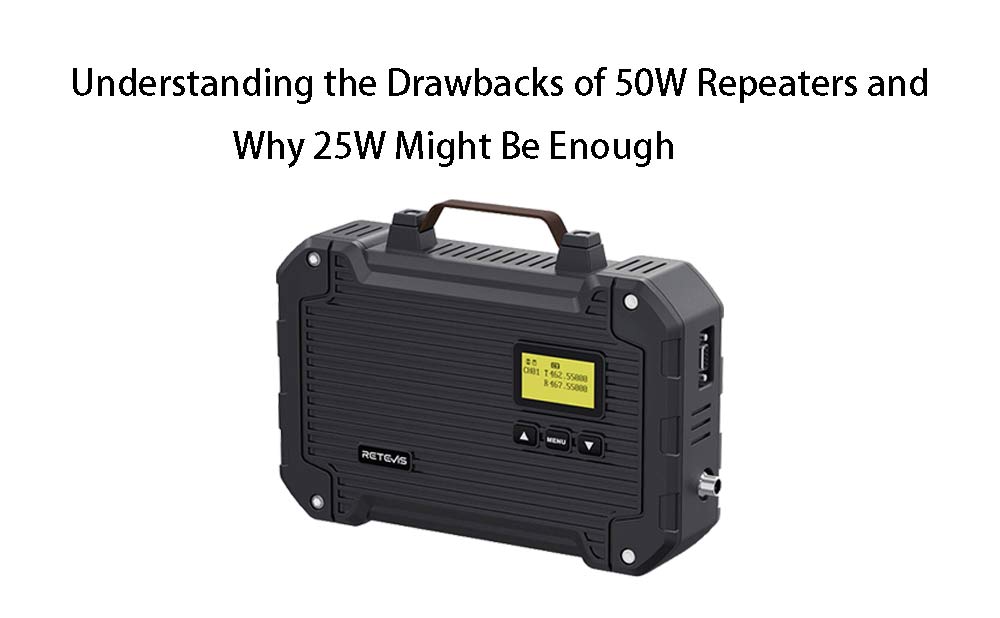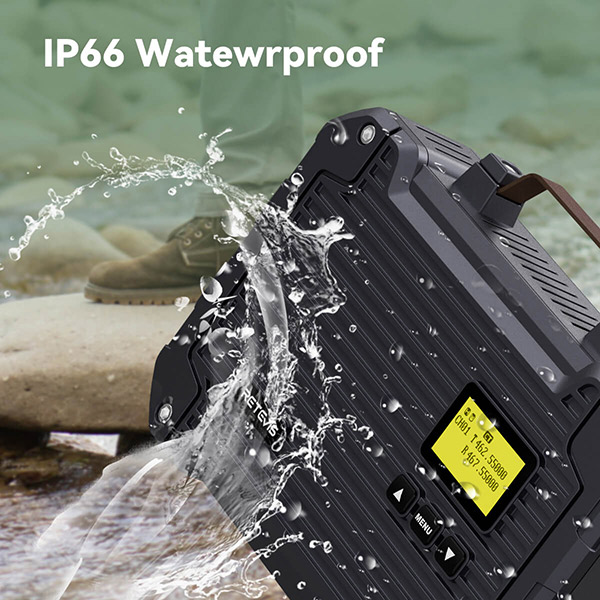Understanding the Drawbacks of 50W Repeaters and Why 25W Might Be Enough

Understanding the Drawbacks of 50W Repeaters and Why 25W Might Be Enough
Introduction
When setting up a communication system, choosing the right repeater power is crucial. While 50W repeaters might seem like the obvious choice for maximum coverage, they come with several drawbacks that make 25W repeaters—such as the RT97L IP66 waterproof repeater—a smarter choice for many scenarios.
In this blog, we'll explore the limitations of 50W repeaters, why 25W might be sufficient, and how the RT97L IP66 waterproof 25W repeater offers the perfect balance of performance and efficiency.
The Drawbacks of 50W Repeaters
1. Higher Power Consumption
50W repeaters consume significantly more energy than 25W models, leading to:
-
Increased electricity costs
-
Shorter battery life in portable or off-grid setups
-
The need for larger power supplies or generators
2. Increased Heat Generation
Higher wattage means more heat, which can:
-
Reduce the lifespan of electronic components
-
Require additional cooling systems
-
Lead to thermal throttling, reducing performance
3. Regulatory and Licensing Issues
In many regions, 50W repeaters require special licensing due to their higher transmission power. This can mean:
-
More paperwork and compliance hurdles
-
Higher costs for permits
-
Legal risks if regulations are not followed
4. Potential for Interference
Stronger signals aren’t always better. A 50W repeater can:
-
Cause interference with nearby electronic devices
-
Overload nearby receivers, reducing clarity
-
Disrupt other communication systems in crowded RF environments
5. Higher Cost
50W repeaters are typically more expensive than 25W models, both in initial purchase and long-term operation.
Why 25W Repeater Might Be Enough
1. Efficient Coverage Without Excess Power
For most urban and suburban environments, 25W provides ample range without the downsides of higher wattage. The RT97L IP66 waterproof repeater ensures reliable communication without unnecessary power drain.
RT97L IP66 waterproof repeater
2. Better Heat Management
With lower power consumption, the RT97L runs cooler, improving longevity and reducing the risk of overheating.
3. Easier Licensing and Compliance
25W repeaters often fall under more lenient regulations, making them easier to deploy legally.
4. Lower Operational Costs
-
Reduced electricity usage
-
No need for additional cooling systems
-
Longer-lasting components
5. IP66 Waterproof Rating for Durability
The RT97L is built to withstand harsh conditions, making it ideal for outdoor, industrial, or emergency use.
When Should You Consider a 50W Repeater?
While 25W is sufficient for most cases, 50W may be necessary for:
-
Extremely remote areas with minimal infrastructure
-
Large-scale disaster response operations
-
Specialized commercial or military applications
For everyday use, however, the RT97L 25W IP66 waterproof repeater offers the best balance of power, efficiency, and reliability.
Conclusion
More power isn’t always better. While 50W repeaters have their place, 25W models like the RT97L IP66 waterproof repeater provide excellent performance with fewer drawbacks—lower costs, better efficiency, and easier compliance.
If you're looking for a reliable, durable, and efficient repeater, the RT97L is an outstanding choice.







